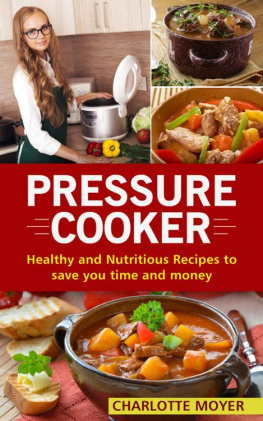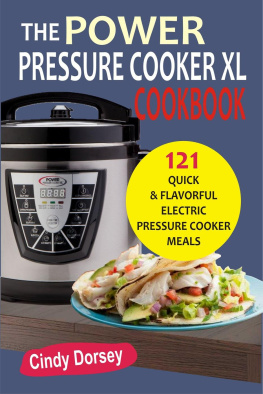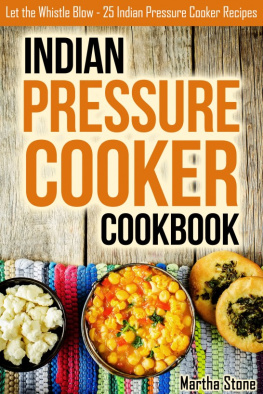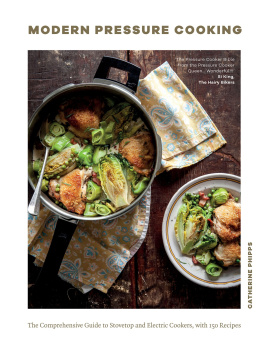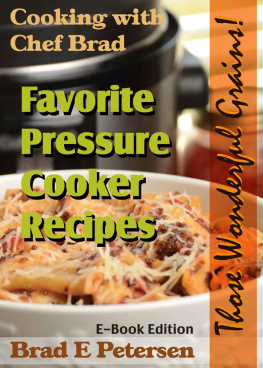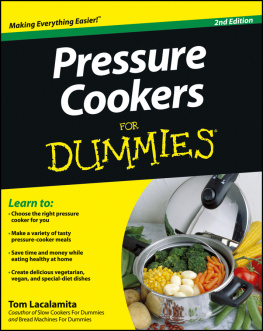Pressure cooking is an underutilized way to cook food. Pressure cooking recipes usually only use one-pot and therefore save on the hassle and toil of washing up. Pressure cooker recipes are also faster than nearly any other cooking method, cutting the time is takes to cook in half or even more.
Furthermore, pressure cookers are also spacious and perfect for batch cooking and recipes for large families or groups. On top of this, pressure cookers often produce better tasting meals than other alternatives, locking in flavor and intensifying seasoning. They also retain all the moisture and juice of the cooked within, keeping the natural taste. This is particularly true for meat and poultry dishes, which become incredibly tender and mouth-watering. All these advantages make pressure cookers the perfect tool for cooking quick and easy healthy meals. This guide will aim to offer dozens of main meals and lunches all cooked using a pressure cooker.
These recipes are promised to be easy, as they almost all use just the pressure cooker itself and require little or no cooking knowledge or skills. As for quick, this is interpreted in two ways. Some meals are quick in that they are ready incredibly soon, often in under 20 minutes. Other meals are quick in the sense that they rely very little preparation and active cooking and can be left to cook after a few minutes of work, although they may take slightly longer to actually finish cooking. Nonetheless, if you are tired of the tedium of cooking healthy, nutritious meals for your family every night, then you have come to the right place. This eBook focuses on main meals and lunches.
Naturally treats, sides and desserts tend to be unhealthy. As for breakfasts, there are very few which are eligible to be cooked in a pressure cooker, which relies upon steam to function effectively.
Chapter 1 How to Use A Pressure Cooker
This chapter will briefly take you through the process of using a pressure cooker. There are two different types of pressure cookers available, traditional hob-based pressure cookers, but also modern-electrical cookers. A pressure cooker works by using stream to raise the boiling point of foods. This allows the food to be cooked at a higher heat, which ultimately allows the food to be cooked faster.
Whenever you are working with a pressure cooker, it is incredibly important to ensure that your pressure cooker is in good shape. Defaults in the pressure cooker structure, such as dents, breaks or cracks can lead to the escape of hot steam, which can cause burns or other injuries. Take a minute to survey your pressure cooker before you use it. As pressure cookers produce steam, the rely upon the recipe being used to have a notable liquid portion. This could be a sauce, but it is often juices from vegetables and meat as they are cooked. It is also simply added water.
Most pressure cookers also come with a steaming basket. This is used when you want to steam food instead of boiling them. Steamed foods often retain superior nutrition, absorb less water and can add crunch and texture to your food. Whenever you use your pressure cooker to cook meat and poultry, you will generally want to brown or sear the meat first. This improves the overall flavor and texture of the resulting dish and also ensures that the meat and poultry are suitably cooked. Many pressure cooker recipes will make use of various types of beans and pulses.
Dry beans will usually need to be soaked in water for at least six hours (if not overnight). However most beans can be found in canned versions, where they are already soaked in water. It is generally best to use these cans as a quick and easy alternative. When actually cooking, you will need to take the safety valve off from the pressure cooker before it can be used. As you start to cook using a pressure cooker, pressure in the cooker will begin to rise as more steam is produced. Once the pressure has reached an appropriate level of intensity (designated by a value or marker on your particular brand of pressure cooker) you can then start the timer for your particular recipe.
However, once the appropriate level of pressure has been achieved, you will generally need to lower the heat applied to the pressure cooker. If you do not, the pressure may continue to rise beyond the level that your recipe designates. All pressure cookers will have mechanisms to release pressure when levels start to get too high, however if this occurs it might increase the cooking time necessary. It is important to stay relatively close to the cooking time in the pressure cooker instructions. Due to the unique method of the pressure cooker, food will often loose its structure and disintegrate if cooked for a few moments too long. Owing to this, it is best to use a timer when cooking with a pressure cooker.
If you do not have a physical timer at hand, most modern smart phones will have a timer app pre-installed or available for free on the app marketplace. Once you have finished cooking under pressure, turn your hob off momentarily. You will need to release the pressure within the cooker before the lid can be removed. Pressure can be released in a variety of ways. The natural release method simply allows the pressure within the cooker to naturally subside. This however will take between 15-20 minutes.
There is also the quick-release method. This method uses a value or release button on the pressure cooker lid to release the pressure relatively quickly. Finally, there is the cold water release method. This method involves taking the pressure cooker and placing it under a running stream of water. The pressure will lower rapidly, making the cold water release method the fastest of the three release methods. This guide will assume you will be using the quick-release or cold-release method, unless specifically stated.
The natural release method is generally only used to allow flavor and spice to better marinate the food, or to cook the food slightly whilst the pressure is subsiding. If using a traditional-pressure cooker is a bit too much for you, than it is often better to use an electric pressure cooker, which will handle the pressure increase and release for you. Electric pressure cookers generally have stronger safety mechanisms and are much more user friendly, making them better for people unfamiliar with pressure cooking, or even cooking in general. Electric pressure cookers also come with a few extra settings, such as keep warm, which can come useful for other recipes.

